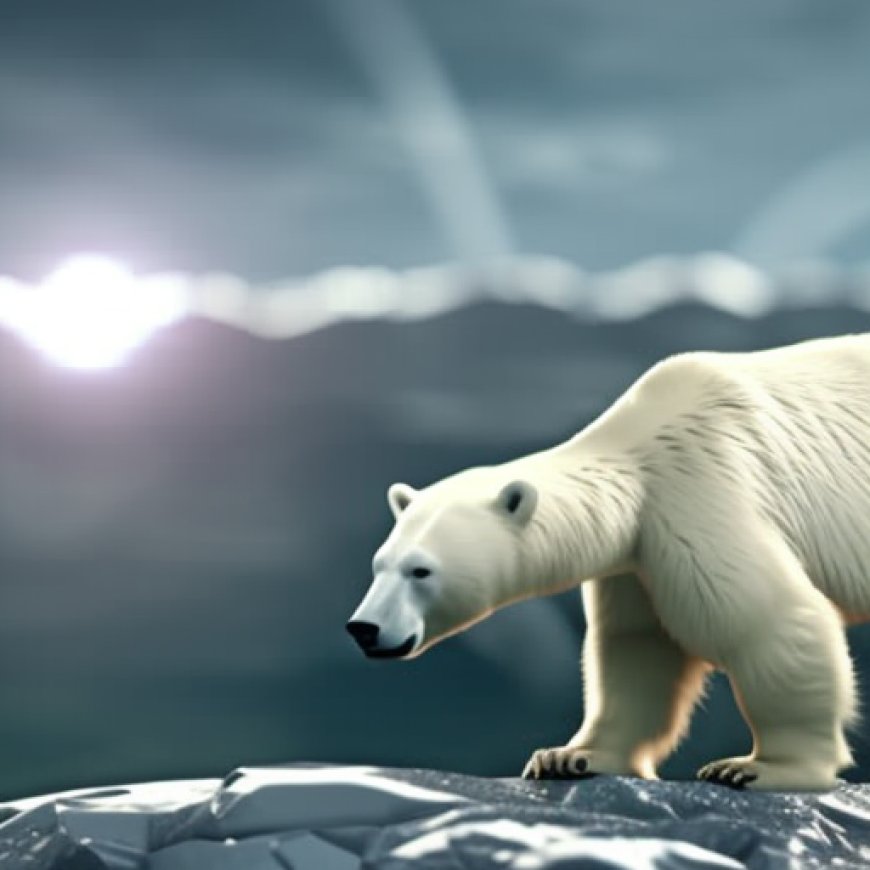Greenhouse gas emissions linked to polar bear decline
Greenhouse gas emissions linked to polar bear decline Cosmos


New Research Links Greenhouse Gas Emissions to Polar Bear Population Declines
Introduction
New research has established a link between greenhouse gas (GHG) emissions and the decline of polar bear populations, providing a basis for enhanced protections under the US Endangered Species Act.
Research Findings
A paper published in the journal Science combines previous research with new analysis to measure the impact of GHG emissions and sea ice loss on polar bear cub survival rates. Due to human-induced climate change, the warming Arctic is reducing polar bears’ access to sea ice, which they rely on as a hunting platform. As a result, they are forced to fast during the summer months, losing nearly a kilogram of body mass per day. This loss of access to sea ice and reduced food availability can lead to unsuccessful cub rearing and even death in extreme cases.
The lead author of the study, Steven Amstrup, chief scientist emeritus at the non-profit advocacy group Polar Bears International and adjunct professor at the University of Wyoming, states, “We’ve known for decades that continued warming and sea ice loss ultimately can only result in reduced distribution and abundance of polar bears. Until now, we’ve lacked the ability to distinguish impacts of greenhouse gases emitted by particular activities from the impacts of historic cumulative emissions. In this paper, we reveal a direct link between anthropogenic greenhouse gas emissions and cub survival rates.”
Implications for the US Endangered Species Act
Polar bears (Ursus maritimus) were the first species to be listed under the US Endangered Species Act (ESA) in 2008 due to the threats posed by human-caused climate warming. Section 7 of the ESA requires that any government-authorized projects, including those funded or authorized by the government, do not endanger listed species.
However, a document known as the Bernhardt Opinion, released by the US Department of the Interior in 2008, demanded specific evidence of how a proposed project’s GHG emissions would impact a species’ survival before the ESA could be fully implemented.
Linking GHG Emissions to Polar Bear Decline
The new research fills the knowledge gap by establishing a connection between ice-free days, polar bear fasting limits, and cumulative GHG emissions. The study demonstrates that not only is sea ice affected by GHG emissions, but polar bear survival is also directly related to these emissions.
Broader Implications
The authors of the study highlight that the implications extend beyond polar bears and sea ice. The same analytical approach can be adapted to assess the impact of GHG emissions on other species and their habitats affected by global warming, such as coral reefs or beach-nesting species vulnerable to rising sea levels.
SDGs, Targets, and Indicators
1. Which SDGs are addressed or connected to the issues highlighted in the article?
- SDG 13: Climate Action
- SDG 15: Life on Land
2. What specific targets under those SDGs can be identified based on the article’s content?
- SDG 13.1: Strengthen resilience and adaptive capacity to climate-related hazards and natural disasters
- SDG 15.5: Take urgent and significant action to reduce degradation of natural habitats, halt the loss of biodiversity, and protect and prevent the extinction of threatened species
3. Are there any indicators mentioned or implied in the article that can be used to measure progress towards the identified targets?
The article does not explicitly mention any indicators. However, the following indicators can be inferred:
- Indicator for SDG 13.1: Number of policies, plans, or measures implemented to reduce greenhouse gas emissions and enhance resilience to climate change
- Indicator for SDG 15.5: Number of species protected under national and international regulations
Table: SDGs, Targets, and Indicators
| SDGs | Targets | Indicators |
|---|---|---|
| SDG 13: Climate Action | Target 13.1: Strengthen resilience and adaptive capacity to climate-related hazards and natural disasters | Indicator: Number of policies, plans, or measures implemented to reduce greenhouse gas emissions and enhance resilience to climate change |
| SDG 15: Life on Land | Target 15.5: Take urgent and significant action to reduce degradation of natural habitats, halt the loss of biodiversity, and protect and prevent the extinction of threatened species | Indicator: Number of species protected under national and international regulations |
Behold! This splendid article springs forth from the wellspring of knowledge, shaped by a wondrous proprietary AI technology that delved into a vast ocean of data, illuminating the path towards the Sustainable Development Goals. Remember that all rights are reserved by SDG Investors LLC, empowering us to champion progress together.
Source: cosmosmagazine.com

Join us, as fellow seekers of change, on a transformative journey at https://sdgtalks.ai/welcome, where you can become a member and actively contribute to shaping a brighter future.







